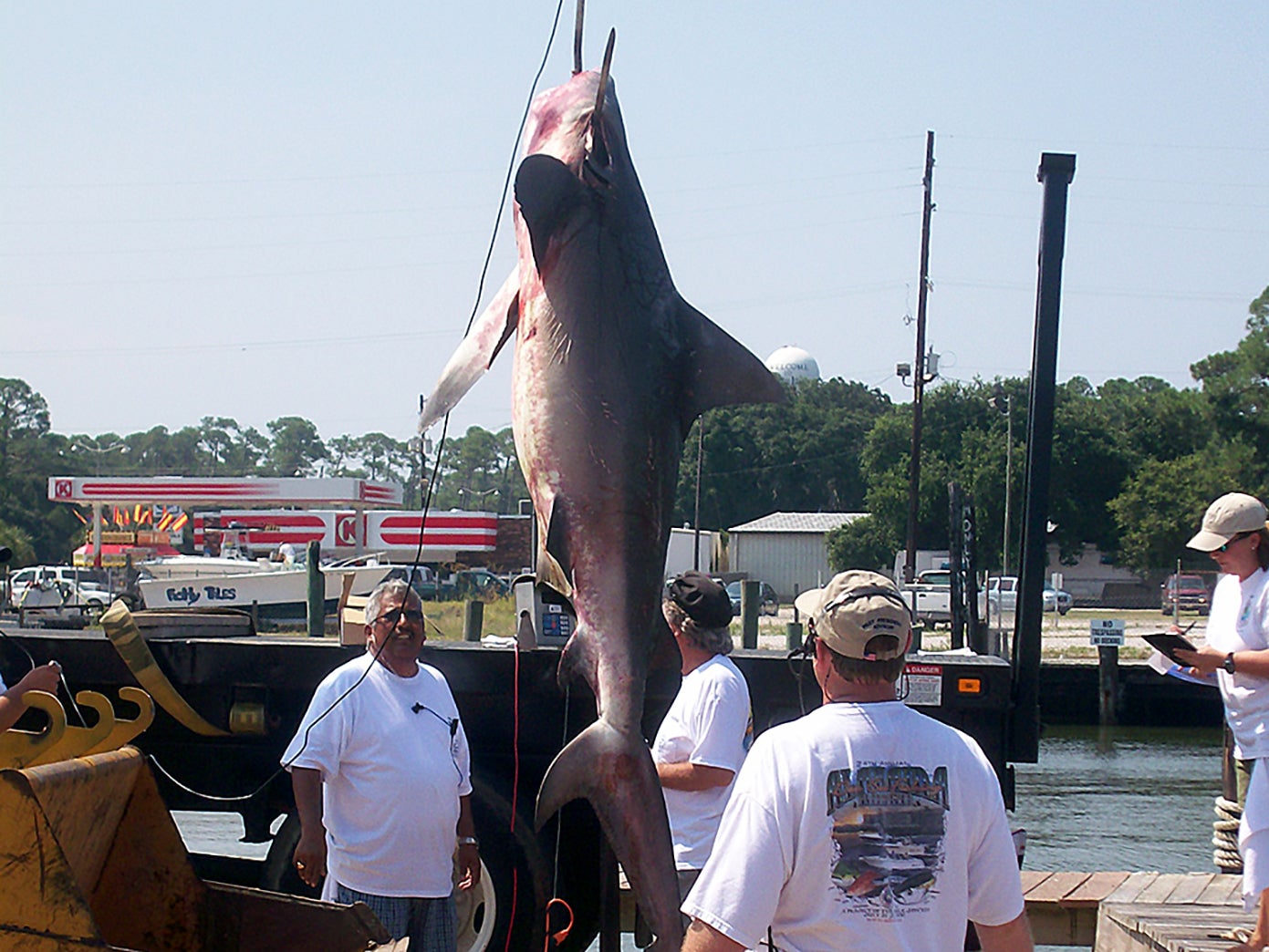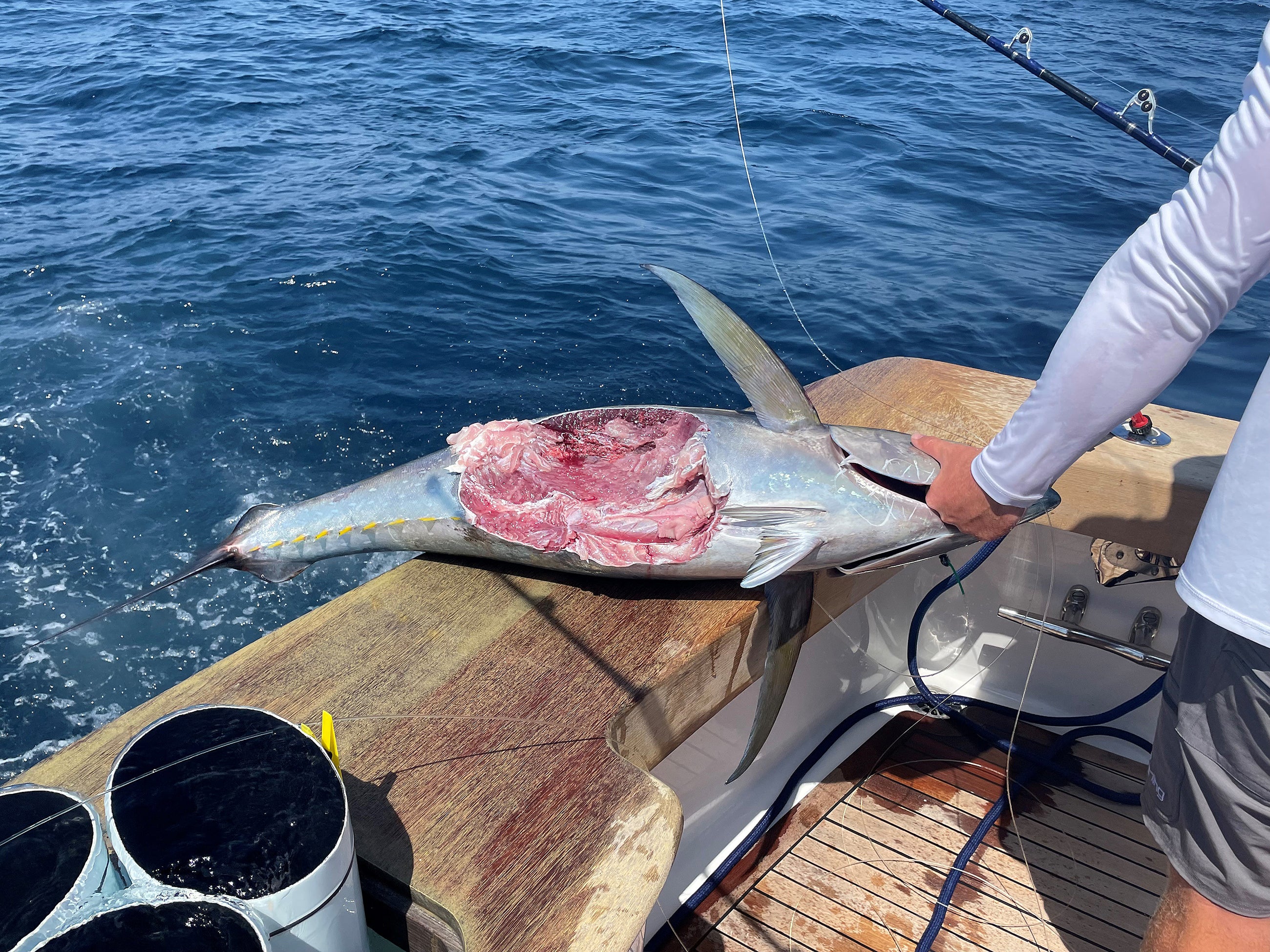By DAVID RAINER, Alabama Department of Conservation and Natural Resources
At the request of anglers and spectators, the Alabama Deep Sea Fishing Rodeo (ADSFR) will again have a shark category for the 89th annual event, scheduled July 14-17 at the rodeo site on Dauphin Island.
Of course, ADSFR officials checked with marine scientists to ensure bringing the category back was ecologically sound.
“It’s been about 7 years since we had a shark category,” said Mark Schambeau, this year’s rodeo president. “We had a lot of requests from anglers and spectators to bring sharks back. So, we started talking to Dr. Sean Powers with the University of South Alabama (USA), Dr. Marcus Drymon of Mississippi State and a few others. We wanted to know about the stock assessment for sharks and how their numbers look in the Gulf of Mexico. They told us they were back to good numbers. They gave us a go-ahead to consider bringing the shark category back.
“We talked to a lot of anglers about bringing it back. They were all excited and wanted to help fund bringing it back. We have shark as an open category, but we also have a shark jackpot, sponsored by Gulf Hauling and Construction, which is funded through a lot of the anglers. This year we are giving away a guaranteed $12,000 for first place.”
The shark category will only include four species; tiger, bull, hammerhead (greater and scalloped) and blacktip. The rodeo’s minimum sizes for tiger, hammerhead and bull sharks is 80 inches total length. The minimum size for blacktip sharks is 60 inches total length.
Anglers who participate in the rodeo’s shark categories are required to possess an Atlantic HMS (highly migratory species) permit with a shark endorsement (hmspermits.noaa.gov) from NOAA Fisheries.
“We only want the large sharks, the mature sharks,” Schambeau said. “We don’t want small sharks. We put large minimums on those sharks because we don’t want a free-for-all. We will be making regular posts on our social media to educate anglers on the legal sizes and species for our tournament.
“Another reason to have larger minimums is to make it easier to identify. That’s why we selected certain species, to help reduce any misidentification. We won’t allow any of the protected shark species to be brought to our docks.”
Anglers aren’t the only ones excited about the return of the category. Marine scientists will be able to obtain valuable information from the sharks brought to the rodeo.
Powers, professor and director of the new USA School of Marine and Environmental Sciences and head rodeo judge, said the top comment from anglers and spectators at the rodeo was about bringing the shark category back. He said the timing is right.
“The spectators enjoy seeing them,” said Powers. “The fishermen, not so much that they want to fish for them, but they have seen sharks in this area increase dramatically in abundance. Fishermen, especially snapper fishermen, are experiencing a lot more bite-offs because of sharks. We, as scientists, call it depredation. That’s when you hook something and another species that you don’t mean to hook comes and eats it.”
Powers said the likely culprits in the depredation are sandbar and bull sharks. The sandbar is one of the protected species except for limited scientific collection.
“The rodeo came to us and wanted to know if we agreed with their decision to bring the shark category back,” he said. “I told them, yes, because I trust the science that goes behind management. As long as you are harvesting within the regulations in terms of species and size limits, then, yes, you can harvest them. That’s what the best science tells us. My big thing is to make sure we educate the fishermen on the regulations.”
The benefit of harvesting the sharks during the rodeo is that the specimens will be used to advance the data collection of the species. Marine scientists will collect vertebrae, stomach contents and reproductive organs to conduct a battery of tests.








